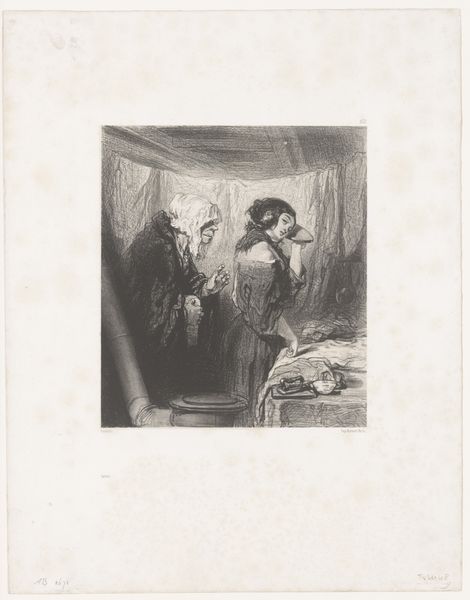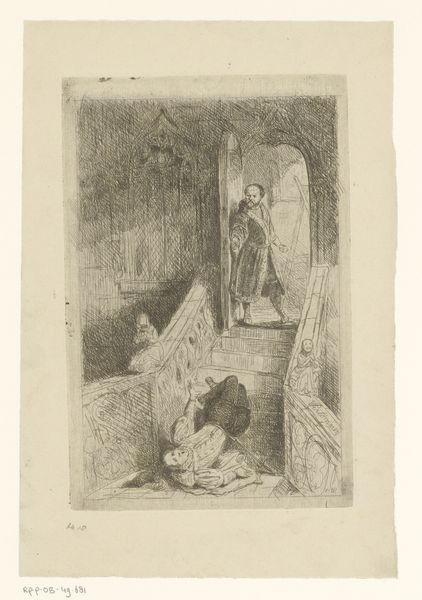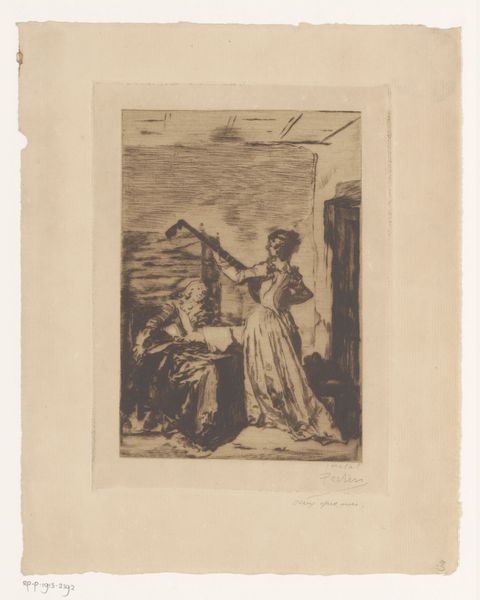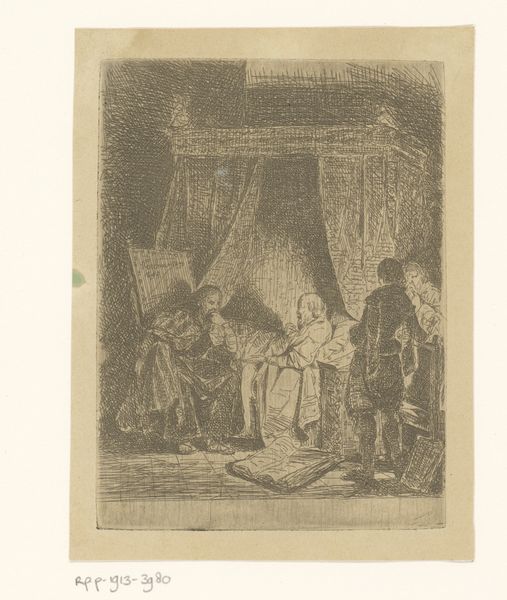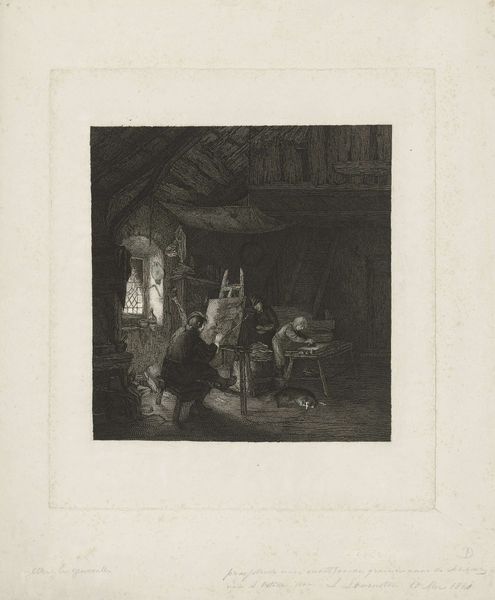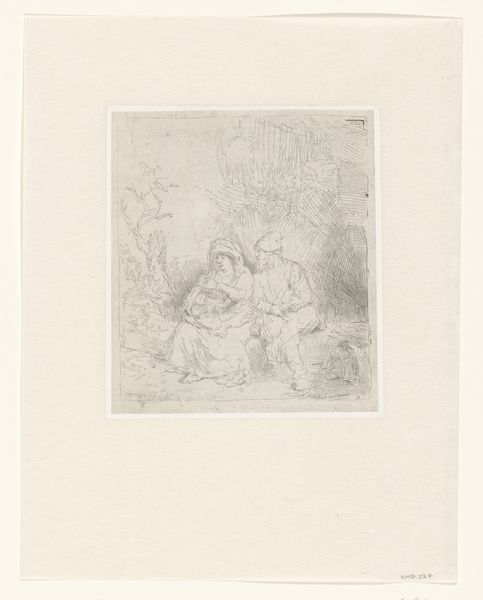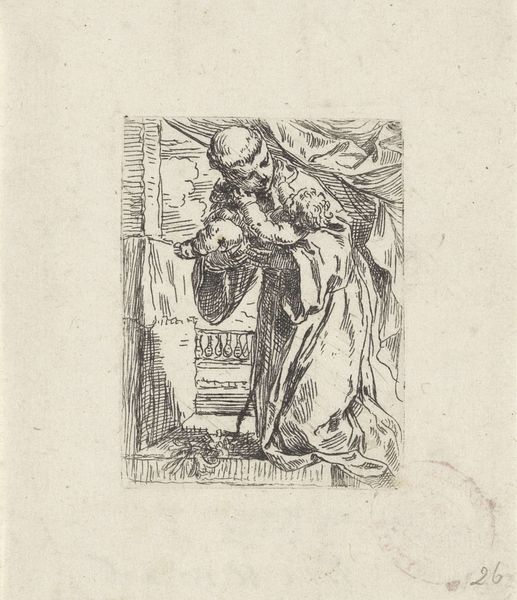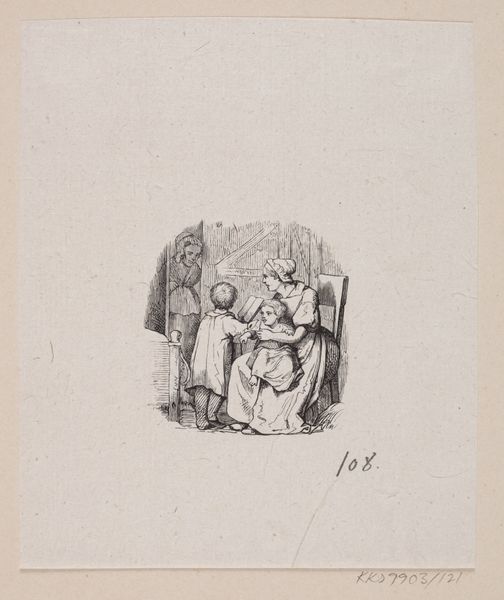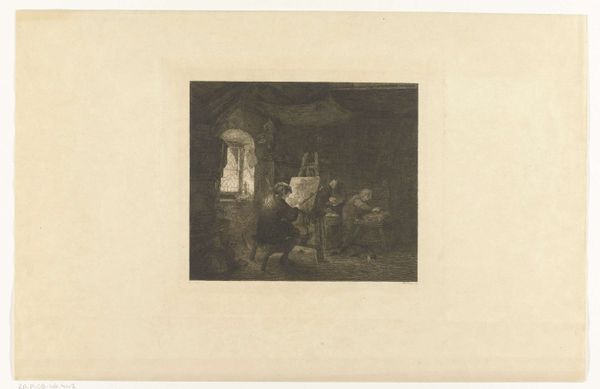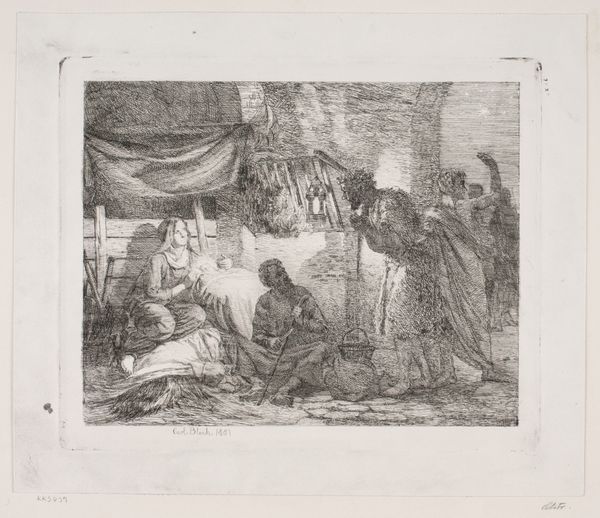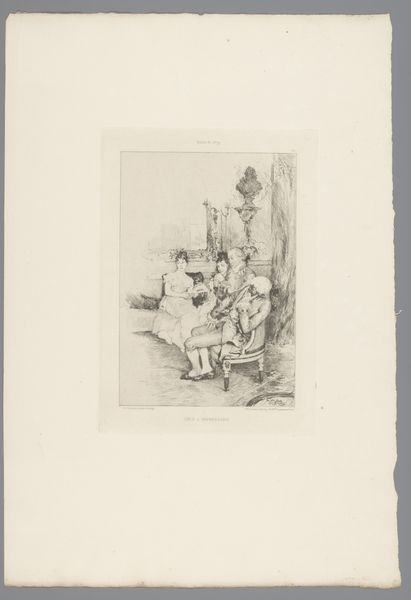
Interieur met een aantal figuren en een man in bed die bezocht wordt door de Dood 1836 - 1912
0:00
0:00
print, engraving
#
medieval
#
narrative-art
# print
#
vanitas
#
genre-painting
#
history-painting
#
engraving
Dimensions: height 105 mm, width 107 mm
Copyright: Rijks Museum: Open Domain
Editor: So, this is "Interieur met een aantal figuren en een man in bed die bezocht wordt door de Dood," or Interior with Figures and a Man Visited by Death. It's an engraving dated from 1836 to 1912, attributed to Isaac Weissenbruch and housed in the Rijksmuseum. It's quite a scene – very gothic, lots of frantic energy, and Death personified is looming over the sick man. What jumps out at you when you look at it? Curator: The overriding feeling I get is one of disruption. The image carries so much medieval symbolism, adapted into a 19th-century setting, where we have Death as an unwelcome visitor, literally disrupting domestic life. The upraised hands, the man dropping his hat – it’s a visual representation of societal fears surrounding mortality and the fragility of life. But also the presence of small children reminds us about what is at stake when confronting death and dying. Editor: I see what you mean about the disruption. Death is quite literally an intruder in the domestic space, framed by the heavy curtains of the bed. I noticed a noose is drawn or placed, near the top of the frame, left. That strikes me as interesting in the context of everything you are pointing out. It is death from outside as well as self-imposed, as well as naturally occurring. Do you think the artist included it purposefully, given these contexts? Curator: Absolutely. The noose can represent both despair and the ever-present possibility of suicide. It amplifies the feeling of societal fragility, where death looms large. The choice of engraving reinforces the stark contrast, mirroring the themes of finality and irreversible events. Editor: It's unsettling how this rather antique depiction still echoes contemporary anxieties. Thank you! Curator: Indeed. The visual language of death clearly transcends time, making us face fundamental truths. Thank you.
Comments
No comments
Be the first to comment and join the conversation on the ultimate creative platform.
